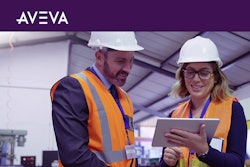
Over the past few years, businesses have had to learn that their supply chains need to be much more resilient. Raw material and component shortages, along with increasing operating and merchandise costs, have continued to exert enormous pressures on global supply chains across the manufacturing and logistics sector, which is still recovering from a global pandemic. But the solution to these issues doesn’t lie in simply holding more inventory and building redundant capacity—both of which increase costs. Thankfully, advances in tech, specifically artificial Intelligence (AI) and analytics, have opened the door to a new, cost-effective way to improving the resilience of supply chains: intelligent visibility.
What is intelligent visibility?
Intelligent visibility gives companies a deeper view into the extended supply chain. These insights help companies react faster and make better, fact-based decisions around how to manage supply chain disruptions and where to focus investments.
Companies can use intelligent visibility to build new capabilities that help them assess where they’re most vulnerable and enable them to see exactly what’s occurring across their extended supply chain.
Recent Accenture research, based on interviews with 30 supply chain executives, found that companies with greater visibility into their supply chains are more likely to retain revenue, profit, and share price performance during periods of disruption. Of course, this is a small sample of companies, but their experiences suggest that visibility can help companies avoid or bounce back quicker from disruptions.
How does intelligent visibility work?
Intelligent visibility is a combination of structural and dynamic visibility supported by analytical techniques and AI.
Structural visibility provides companies with the full picture of their operations at a given point in time or over a certain period. This oversight helps to uncover issues surrounding where their suppliers are, where points of manufacturing and logistics route are, interrelationships across the broader supply chain network, and potential supply chain challenges.
On the other hand, dynamic visibility helps companies understand what is happening right now. Companies use it to monitor and respond to events in real-time, helping them to see where products are across the chain, how their plants and warehouses are running, when and where disruptions are happening, and how disruptions are affecting the company.
Our research found that most companies have an advanced level of structural visibility, often using classic risk management and network modeling, but executives said structural visibility is restricted to particular suppliers instead of the entirety of their supply base. Often, these suppliers aren’t the ones that present the most risk to the overall ability to manufacture and deliver products.
Dynamic visibility, by contrast, was found to be less mature across the companies researched. Many companies reported that they used monitoring and predicting, but only 40% said that they use data prescriptively.
This revelation does not mean companies are not trying to move to an enhanced real-time visibility. In fact, significant investments in this space have been made. Some of the common challenges that need to be addressed include fragmented data and operational technology, sourcing high quality data from suppliers, and competing priorities for the right level of investment to move at pace.
Driving greater supply chain resiliency
Companies can and should use intelligent visibility to drive greater supply chain resiliency, and we found three key takeaways in this regard.
First, our research showed that companies with greater visibility are better positioned to weather all kinds of disruptions. Having said that, full visibility across the supply chain isn’t necessary or economically feasible. We found that it’s far more effective to focus on the most important areas of the business.
Second, we found that structural visibility is not just an option, but a necessity. Every company should have the basics—network mapping, risk management, network assessments, and modeling—in place, allowing them to leverage advanced analytics to go to the next level.
Finally, companies should always be targeting more advanced dynamic visibility. Predictive visibility and autonomous execution, achieved with a sophisticated control tower, are the keys to maximizing resiliency.
On a broader note, intelligent visibility should be seen as a long-term investment. Supply chains are expected to become even more complex and dynamic to meet customer demands over the next few years. Therefore, a sustainable visibility solution is critical for continual optimization and improvement. Those that fail to embrace intelligent visibility could find themselves behind the curve.




















